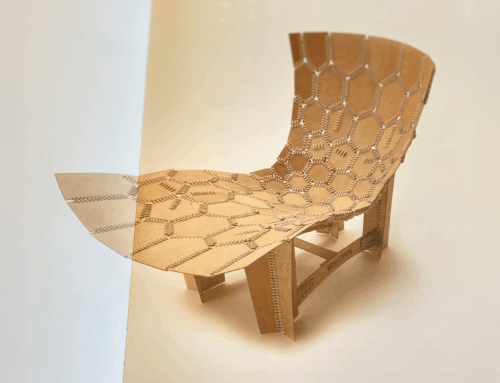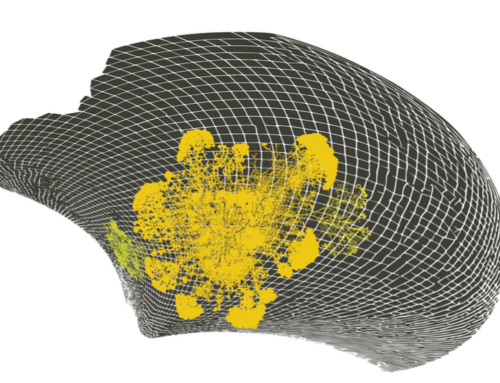I would like to think that the theme of this year’s Architecture Biennial in Venice – “Out There: Architecture Beyond Building” – was inspired by my book Beyond The Object. But as it was published back in 1987, I’m not going to demand a credit – except here.
Exhibitors responded to the “beyond building” theme in two divergent ways. The big-name star architects (or “i Big”, as they’re called in Italian), who clustered in the 300-metre long Corderie dell’Arsenale, appear to have been assimilated into an abstract world of money and pure form. Among huge shiny objects, curiously dated images of all things “network” were projected onto vast screens. There were “Do Not Touch The Exhibit” notices, too – but one didn’t really want to. On balance,i Big served a joyless meal.
A much higher-energy spread was presented by Emiliano Gandolfi in his survey of experimental architecture in the big Italia building. The 40-plus groups present were ‘street’ in all senses of the word. Installations by IDLab and Aether actually made me smile – and how often does that happen at an architecure show?
For me, the project that best captured what’s happening was the Polish “Hotel Polonia: The Afterlife of Buildings” (see pic above). Six shiny new buildings were first photographed by Nicolas Grospierre, and then Kobas Laksa worked on them visually to answer the question, “What will the future hold for these buildings once a dramatic reversal of social and economic relations occurs?”. If you ask me – or look at the blogs – “a dramatic reversal of social and economic relations” is happening right now – so I’d love to see Laksa visualize, say, the Lloyds of London (insurance) building in 2020…
Speaking of which, The Stern Review, released two years ago, stated that failure to tackle climate change could cost the world – and by implication, its insurance companies – up to 7 trillion dollars.. Today, “fears are growing over the financial health of American International Group (AIG), the world’s biggest insurance firm”.
http://www.aia.org/aiarchitect/thisweek06/0203/0203globalwarming.cfm
COMMENT FROM JOHN MANOOCHEHRI
John, I love what you write. Not piffle, obviously. I love your focussed catholicity, and your real concern that things are not in a good way. I really feel for your attempt to situate a radical critique in the mainstream of operations, and to couch it in digestible, manageable concepts and language.
I don’t agree with the way you understand entropy in relation to sustainability, however! At least not by the following para:
“What would architects design, if they did not design buildings?” My question is
not a rhetorical one. The inputs and outputs of industrial society are wildy out
of balance – and that includes its buildings and infrastructure. We have reached
the end of a brief era in which we could burn cheap fossil fuel, and despoil
ecosystems, mindless of the consequences. We need to re-imagine the built world
not as a landscape of frozen objects, but as a complex of interacting ecologies:
energy, water, mobility, food. Our life-sustaining ecologies, especially, need
to be nurtured, not swept away, built over, or diverted. The need for new
buildings will be rare. Sometimes the design choice will be to do nothing”
Assume we have nothing on the planet, no fossil fuels, nothing. All toys taken away. This is your implication. What have we got? We have one and a half energy sources: solar, and tide (moon gravity). We have knowledge. The most efficient energy system every devised, all things considered, is the leaf: and we can create lots of those. And the mind, well it just keeps on trucking. I just don’t believe that even with that uber-minimalist eco-design set – sun and the mind – we cannot create and sustain magnificent societies.
What’s worrying to me in what you write is uncertainty over whether you think that, post-oil-toys, we will have to be farmers and craftspeople (à la Kunstler), or you think we need to just need to find ways to stay innovative and ‘modern’ in the post-oil-toy age. My scientific view is that entropy is not merely a function of the universe winding down, such that post oil we have less ‘low entropy’ to burn – i.e. just the sun – and this means we will need to live ‘simpler’ lives, because all the oil-based stuff we have now will be kaput.
Entropy is, in fact, it is a complex function of energy AND knowledge. We have energy BUT we also have the mind. This is the point Georgescu-Roegen makes in ‘The Entropy Law and The Economic Process’: entropy is an instrumental-anthropomorphic concept, and theories of it, including statistical, have not been able to rid it of its anthropic ghost. If this were not so, we would not be able to find ‘new’ uses for what we previously considered waste or otherwise functionless/valueless. Who would have thought that so much power and value would be carried in a vehicle as simple as a glass rod (i.e. fibre optics fibre)? Who would have thought that something as simple as reflection would power the intformation revolution (i.e. internal reflections down fibre optics)? Okay, so to deliver information down glass, we had to discover lasers: but who would have thought pulsing light into a ruby crystal would have it come out all straight and neat? The point is: the richness of the world that leads to value and welfare is not inherently reliant on high-energy-intensity. It’s also reliant on intelligence and information intensity. So I think it’s crude and misleading to imply that when oil runs out, climate and resource snafus kick in, etc, we won’t have anything to do as designers.
You of all people will know why nature has evolved fractal forms. It’s not because they’re nice. Self-repeating forms bla bla is just language and bandied about. Fractal – which stands for fractional dimension – is a phenomenon nature evolved to break as far as possible the link between volume (of biomass) and surface area (for light absorption): and thus to optimise radically the prospects of survival. Trees (and lungs) are elegant (inside-out, in the case of trees) Menger sponges, which have freaky ratios of volume to surface area: within given volume, leaf surface area (2D) reaches for infinity, while biomass volume (3D) hunkers down low. Trees look 3D, but they are really desperate to be resource-conserving 2D objects – they just take advantage of a 3D world to get more 2D action going. Their dimensionality is thus ‘fractal’ between 2 and 3.
In short, strict entropy constraints gave us nature as we know it: and I don’t see nature tending towards blobby, cautious sloths trying to conserve their energy, which is how I read the implication of your “sometimes the design choice will be to do nothing”. Fractional dimensionality is just one of many lessons for human design in the future, we haven’t even begun to implement it. And this, of course, is an architectural strategy (surface area to volume, being one of their concerns). Architects will be very very busy in the low entropy world you allude to.





